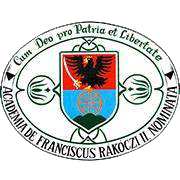Please use this identifier to cite or link to this item:
https://dspace.kmf.uz.ua/jspui/handle/123456789/3336| Title: | Berehove and its surroundings during the Khrushchev era (1953–1964) |
| Other Titles: | Берегове та його околиці за Хрущова (1953–1964) |
| Authors: | Váradi Natália Вароді Наталія Natalia Varodi |
| Keywords: | history of Berehove;Beregszász;Berehove politics;economy;culture;society |
| Issue Date: | 2021 |
| Publisher: | Інститут українознавства ім. І. Крип’якевича НАН України |
| Type: | dc.type.researchStudy |
| Citation: | In Новітня доба. 2021. Випуск 9. c. 63-94. |
| Series/Report no.: | ;Випуск 9. |
| Abstract: | Abstract. Histories of cities, towns, villages are an essential part of understanding the history of
a country, a historical era. Knowledge of the local history is important for understanding the
historical past of the local population, for developing and preserving its sense of identity.
The exact date of the foundation of Beregszász is a subject of debate among local historians, yet the town, what lies on the banks of the Verke Canal for over 900 years, has experienced
many upheavals, glorious and tragic moments in its past. The history of the town is very rich
in various important historical events.
During the Soviet period (1945–1991) as well as being part of independent Ukraine, Berehove
played an extremely important role in the political and cultural history of the local population.
After the death of Generalissimo Stalin on March 5, 1953, it became clear that the
socialist camp, which had previously been considered inseparable, was far from unifi ed. Nikita
Khrushchev became the winner in the struggle for power of the three triumvirates, after which
the signs of political weakening became more and more noticeable. The consequences of his
policy were felt in Berehove as well.
The period from 1953 to 1964, the historical era of the ‘Khrushchev Thaw’, can be
considered a positive decade in the history of the Soviet Union, as well as of the town, in terms
of improving living standards and weakening the dictatorship. This period was characterized
by a reduction in political repression and censorship besides partial liberalization of political
life. Khrushchev allowed some freedom in culture and media, opened up cross-border trade
and economic reforms, educational development also was obvious.
Berehove is located 72 kilometers from Uzhhorod, the centre of the Transcarpathian
region of Ukraine, and only 6 kilometers from the border with Hungary, i.e., the European
Union. Many have been interested in the town, its past has been researched by several historians, however, a comprehensive town monograph covering the entire history of the town, its
political, economic and cultural life, has not been completed to date. The present study does
not undertake this either, it only represents the town’s life and history during the Khrushchev
era, mainly based on the articles published in the contemporary Berehove district paper, i.e.,
the «Red Flag» (Hungarian title: «Vörös Zászló»). Резюме. Оскільки історії міст, селищ, сіл – невід’ємна частина розуміння історії країни, епохи, то акцентовано, що знання локальної історії важливе для усвідомлення минулого місцевих мешканців, розвитку та збереження їхнього почуття самобутності. Вказано, що назву «Берегсас» згадано в офіційних документах від 1504 р., а точна дата заснування міста з багатовічною історією – предмет суперечки серед місцевих краєзнавців: Ласло Зубанич (László Zubánics) датує її 1061 р. або 1063 р., а Дьордь Чанаді (György Csanády) – 1096 р. Отже, встановлено, що місту, яке розкинулося на березі каналу Верке, вже понад 900 років, і воно пережило багато потрясінь, славних та трагічних моментів. Зазначено, що історія його дуже багата на різні важливі події, а в радянський період (1945–1991), як і у складі незалежної України, Берегове відіграло надзвичайно важливу роль у політичній та культурній історії місцевого населення. Вказано, що після смерті генералісимуса Сталіна (Иосиф Сталин) 5 березня 1953 р. стало очевидно, що соціалістичний табір, який раніше вважався нероздільним, усе-таки був далеко не єдиним. Відзначено, що Микита Хрущов (Никита Хрущов) переміг у змаганні за владу трьох тріумвіратів, після чого ознаки політичного послаблення ставали все помітнішими, а наслідки його політики були відчутні і в Береговому. Констатовано, що період із 1953 р. по 1964 р., епоху хрущовської відлиги, можна вважати позитивним десятиліттям в історії Радянського Союзу з погляду підвищення рівня життя й ослаблення диктатури, він характеризувався зменшенням політичних репресій та частковою лібералізацією політичного життя. Відомо, що Берегове розміщене за 72 км від Ужгорода – адміністративого центру Закарпатської обл. України і лише за 6 км від кордону з Угорщиною, тобто Європейським Союзом. Відзначено, що багато хто цікавився містом, його минуле досліджували декілька істориків, однак ґрунтовної монографії, яка б охоплювала всю історію, його політичне, економічне та культурне життя, до сьогодні не створено. Відтак у дослідженні це також не поставлено за мету, а лише віддзеркалено життя й історію міста за часів М. Хрущова, переважно на основі статей, опублікованих у сучасній берегівській районній газеті «Червоний прапор» («Vörös Zászló»). |
| URI: | https://dspace.kmf.uz.ua/jspui/handle/123456789/3336 |
| ISSN: | 2409-434X |
| metadata.dc.rights.uri: | http://creativecommons.org/licenses/by-nc-nd/3.0/us/ |
| Appears in Collections: | Váradi Natália |
Files in This Item:
| File | Description | Size | Format | |
|---|---|---|---|---|
| Varadi_N_Berehove_and_its_surroundings_during_the_Khrushchev_era_2021.pdf | In Новітня доба. 2021. Випуск 9. c. 63-94. | 196.01 kB | Adobe PDF | View/Open |
This item is licensed under a Creative Commons License





